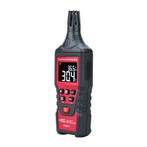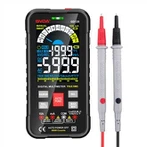About the design of filter and voltage stabilizing circuit
1. Device and filter circuit selection
Capacitors, inductors, RC circuits, and other filter circuits are frequently used in rectifier filter circuits. By creating a counter electromotive force to the pulsing current with an inductor, one can achieve inductor filtering, which prevents changes in the current. The filtering effect improves with increasing inductance. Field stations with high load current and no need for filtration typically employ it. A filter circuit known as an RC filter circuit is used to link capacitors and resistors. Reducing portion of the DC voltage, a resistor is only appropriate for circuits with low current.Capacitive filtering raises the voltage amplitude and stabilizes the rectified output voltage by utilizing the capacitor's charge and discharge effects. It works well in a variety of rectifier circuits and has a decent filtering effect. The type, capacity, and withstand voltage value of filter capacitors are the primary factors to consider while choosing one.
Tantalum electrolytic, aluminum electrolytic, and monolithic capacitors are examples of frequently used rectifier and filter capacitors. Despite having a huge capacity, aluminum electrolytic capacitors have low withstand voltage, a large leakage current, and a low operating temperature (up to 70°C). Tantalum capacitors are typically utilized in locations with higher requirements because they have higher withstand voltages, higher operating temperatures, and fewer leakage currents than aluminum electrolytic capacitors. Large insulating resistance, low loss, compact capacity, low operating temperature (up to 55°C), and high withstand voltage are all features of polyester capacitors. Small size, high withstand voltage, stable chemical and thermal characteristics, and small capacity can all be achieved using monolithic capacitors.
Usually, when the rectified output current is large, the voltage must be stabilized through electrolytic capacitor filtering. When the output current is small, ordinary capacitors or electrolytic capacitors can be used for filtering. If there are ripple coefficient requirements for the output voltage of a DC stabilized power supply or to prevent high-frequency noise, it is best to use electrolytic capacitors and small-capacity non-polar capacitors in parallel: small-capacity capacitors can filter out high-order harmonics in pulsating DC, and electrolytic capacitors It can filter out a large amount of low-frequency components, has a wide voltage stabilizing range, and has good effects. The rectifier filter circuit does not require excessive capacitance and voltage resistance. Typically, the capacitance of a capacitor is estimated based on the output current. If the output current is large, the capacity is also large. If the current is small, the capacity is also small. However, too large a capacitance will reduce the output voltage value, while too small a capacitance will cause large and unstable voltage fluctuations. The capacity is determined. The withstand voltage value is generally 1.5 to 2 times the working voltage of the connected circuit.
2. Voltage stabilizing circuit and device selection
There are two types of voltage stabilizing circuits: discrete component voltage stabilizing circuits and integrated voltage stabilizing circuits. The invention is mainly used in low-voltage and small-current rectifier circuits, and has the characteristics of small size, simple circuit, high voltage stabilization accuracy, and convenient use and debugging. When choosing, you first need to determine whether the series is positive or negative, adjustable or fixed, and secondly, you need to select a specific model based on its rated voltage and current. At the same time, when the voltage regulator is connected to the rectifier circuit, some protection components should be added appropriately, such as connecting diodes at the input/output terminals to prevent short circuits at the input terminals, and connecting small capacitors between the input terminals and ground to limit the input voltage amplitude, etc.






